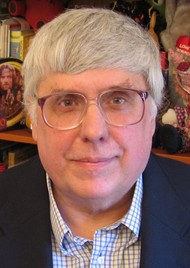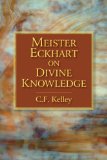Lessons from Alchemy & Chaos Theory
Page 1 of 2 pages 1 2 > - Full Article

DharmaCafe is pleased to present the first in a series of articles connecting the traditional and ancient science of alchemy to the new science of chaos theory written by mathematician, practicing Jungian psychologist, and life-long amateur magician Robin Robertson. Here Dr. Robertson overviews the entire series and introduces several fundamental alchemical principles.
Introduction:
How is it that transformation comes about? Let us look at two models of that process, both of which ostensibly look at outer transformation, while unknowingly also speaking about inner transformation. One is an ancient model - Western alchemy - which came into existence in the Western World during the 1st through the 3rd centuries, reached its peak in the 15th and 16th centuries, and still existed in some form during the 17th and 18th centuries. It was only in the twentieth century, however, that the idea first occurred that alchemy was actually a model for psychological transformation. Psychologist C. G. Jung argued that the alchemical opus (i.e., the stages of the process leading to the production of the Philosopher’s Stone), was equally a portrait of the stages of the individuation process of the alchemists, which they were unconsciously projecting out onto the physical world. Religious historian and philosopher Mircea Eliade placed the emphasis slightly differently: he said that the processes that underlie alchemy lie deep in both the psyche and the world, and must then inevitably occur in any transformative process, whether in chemical beakers, or inside the human soul.
The other model - chaos theory - is much more recent. Deterministic chaos was first recognized explicitly in the early 1960’s, with meteorologist Edward Lorenz’s early computer models of weather. His work led to what has been termed “sensitive dependence on initial conditions.” Or more popularly - the butterfly effect - the idea that the flutter of a butterfly’s wings in China might affect the weather in Los Angeles. This is because very tiny initial changes can have very large final effects, when the changes are fed-back into a system and amplified, over and over.
Anyone who is called to the difficult inner journey of self-transformation ineluctably awakens deep structures in the psyche that can be seen in both the alchemical opus and, properly translated, in chaos theory. These two parallel models share five critical insights (as well as many smaller ones) which provide a template for transformation. No matter what particular spiritual path we have chosen (or which has chosen us), these insights can help enrich our understanding of the process of transformation, whether outside in the world, or within our own lives.
1. The self-referential nature of reality1
In alchemy, this is represented in the core belief of “as above, so below,” first presented in the fabled ‘Emerald Tablet.’ In Chaos theory, this occurs in several different presentations, including the fact that global (i.e., as above), and local (so below) are inextricably mixed. The chaos theory example which is equivalent in renown to the Emerald Tablet might, however, be Benoit Mandelbrot’s mathematical concept of fractals.2. Feedback
Here I’m using the more modern term. All of chaos theory is based on feeding back information from one stage of a process to the next stage of the process. The computer has allowed scientists, for the first time, to model the way nature continually feeds back actions into themselves. But alchemy tried earlier to model such behavior by building up-and-down movements into their alchemical stages such as sublimatio (sublimation, aeration, rising, spirituality), and mortificatio (mortifying, falling into matter), or more explicitly in the circulatio (continual cycles of rising and falling). But the most ancient alchemical symbol of feedback is the image of the uroboros, the snake that swallows its own tail.3. Transformation through cycles of taking apart and putting back together
In alchemy, this is accomplished through stages such as solutio (i.e.,dissolve), and separatio (break into parts), followed by stages such as coagulatio (coagulate, come together) or coniunctio (conjunction, joining). This process is implicit in all of chaos theory, especially in ‘strange attractors.’ The most famous example is the baker transformation, in which a baker kneads dough over and over, separating parts of the dough that are close together, and bringing together other parts that were widely apart.5. Chaos/Emergence
In alchemy there was an explicit stage of darkness and confusion: the nigredo. There was an understanding that because this chaos was beyond all definition, it implicitly contained all possibilities within itself. Eventually, points of light (scintillae of light) would begin to emerge within the darkness of the alchemical experiment. There was no possibility of predicting which spark would suddenly grow into the light of new birth, but new birth there would be.And, of course, as one can tell by the name chaos theory, chaos is explicit part of the modern model. As we will see in more detail, order gradually bifurcates, splitting into first two possibilities, then four, and so on. It is impossible in advance to predict which fork will be taken. Then at some further point, the bifurcations change into chaos. But what is a new insight in chaos theory, is that even this chaos has structure at a global level, that out of it emerges a new order.
6. Inseparability of Experiment and Experimenter
There are innumerable references in alchemical texts to the idea that in order to fully carry out the opus, the alchemist must first purify himself in order to become worthy of the stone. Though less explicit in chaos theory, it is nevertheless found there. For example, neurobiologist Walter J. Freeman, a pioneer in the application of chaos theory within neuroscience, discovered that: “Instead of minds shaping themselves to their sensory inputs from the world, minds shape sense impressions according to their innate categories.” Freeman demonstrated this conclusively through his study of dynamic attractors in the brain for odor and other senses.This last topic - the inseparability of experiment and experimenter is, of course, why alchemy and chaos theory can teach each of us something about our own process of self-transformation. This conjoined relationship between the world and the psyche was perhaps best expressed in the words of Alain de Lille, 12th century theologian: “God is an intelligible sphere whose centre is everywhere and whose circumference is nowhere.”2 Each of us through our own process of growth and transformation in turn affects everyone and everything.
Page 1 of 2 pages 1 2 > - Full Article










